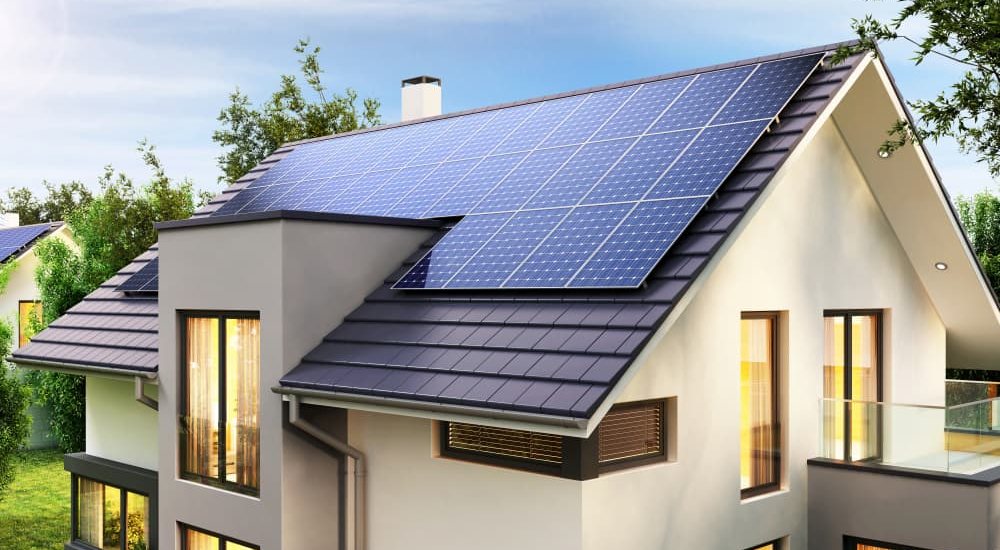Welcome to GM Tech
Welcome to GM Tech
With the rise of global energy prices and the enhancement of environmental awareness, more and more families are beginning to pay attention to solar power generation systems, hoping to reduce electricity bills and achieve green and low-carbon life by installing photovoltaic equipment. However, many users face a core question when planning a home photovoltaic project: How big a solar system do I need for my home?
As a manufacturer focusing on the research and development and application of energy storage technology, GreenMore provides complete home energy storage solutions for users around the world. This article will analyze in detail from a professional perspective how to scientifically configure a suitable solar energy system based on your household electricity needs.
1. Determine the average daily household electricity consumption
To calculate the size of the solar system you need, you first need to know your home's actual daily electricity consumption. You can find this out by:
Most power companies will show your monthly electricity usage (kWh) on your bill. Divide it by 30 to estimate your average daily electricity usage.
Example: If your monthly electricity usage is 300 kWh, your average daily electricity usage is about 10 kWh.
List the power (W) and daily operating time (h) of commonly used electrical appliances in your home, and estimate using the formula Power × Time = Power Consumption (Wh).
| Home Appliances | Power (W) | Daily usage time (h) | Daily power consumption (Wh) |
| Refrigerator | 150 | 24 | 3600 |
| Air conditioner | 1500 | 4 | 6000 |
| Illumination | 100 | 6 | 600 |
| TV | 150 | 3 | 450 |
| Total | 10.650Wh |
The capacity of the energy storage battery is configured according to the number of days set
The energy storage system needs to be configured with redundant capacity according to local climate conditions. Taking Beijing as an example, the average number of consecutive rainy days per year is 2.3 days. It is recommended that the energy storage capacity be calculated according to the following formula:
Energy storage capacity (kWh) = battery charge and discharge efficiency × discharge depth average daily power consumption (kWh) × self-sufficient days (days)
For example, if a household with an average daily electricity consumption of 30 kWh requires self-sufficiency for three days and uses a lithium-ion battery with a charge and discharge efficiency of 90% and a discharge depth of 80%, it needs to be equipped with: 0.9×0.830×3=125kWh
2.Calculate the required solar system capacity
Once the average daily electricity consumption is determined, the required solar system installed capacity (kW) can be further calculated.
Required system capacity (kW) = average daily electricity consumption (kWh) ÷ daily exposure hours (h)
Note: Peak Sun Hours refers to the standard sunshine time when the sunlight intensity reaches 1000W/m², which varies slightly in different regions. For example, in southern China, the average sunshine hours are about 4 hours/day.
Example:
If the average daily electricity consumption is 10 kWh and the average sunshine time is 4 hours, then:
Required system capacity = 10 kWh ÷ 4 h = 2.5 kW
This means that to meet your electricity needs for a day, you will need to install at least a 2.5 kW solar system.
3. Consider the supporting needs of the energy storage system
Although solar energy systems can generate electricity during the day, household electricity consumption is often concentrated in the evening and at night. Therefore, in order to achieve true "self-generation and self-use", we recommend using an energy storage battery system.
Energy storage battery capacity selection recommendations:
GreenMore Recommended Products:

4.Other influencing factors
Before actual installation, the following factors need to be considered:
| Influencing factorsI | llustrate |
| Roof area | PV panels require about 6–8 square meters of space per kilowatt |
| Roof orientation | South is the best direction, east/west is also acceptable, north is not recommended |
| Location | The light resources in different regions vary greatly, which affects the power generation efficiency |
| Grid connection policy | Some countries support the access of surplus electricity to the grid, which can provide subsidies and increase the return on investment |
| Energy storage system compatibility | Ensure that the PV inverter matches the GreenMore energy storage system |
5. How GreenMore can help you customize your solution
GreenMore provides one-stop home energy management services, covering:
Our team of engineers can recommend the most suitable PV + energy storage combination solution for you based on your household electricity usage habits, geographical location and budget to ensure efficient system operation and maximize return on investment.
6.Conclusion
"How big a solar system do I need for my home?" The answer to this question depends on many factors, including your electricity usage habits, roof conditions, geographic location, and whether there is an energy storage system. Through scientific calculations and reasonable planning, you can accurately configure a photovoltaic system that can meet your daily electricity needs and save electricity bills.
GreenMore is committed to providing safe, intelligent and efficient home energy storage solutions to home users around the world. No matter where you are, we will provide you with professional product and service support to help you move towards a green energy life.
If you are planning a home photovoltaic project, please visit GreenMore's official website www.gmsolarkit.com to contact our international business team for free consultation and personalized solution recommendations.
Please Read On, Stay Posted, Subscribe, And We Welcome You To Tell Us What You Think.


Copyright @ 2025 GM Tech All Rights Reserved.  Network Supported
Network Supported
Sitemap / Blog / Xml / Privacy Policy